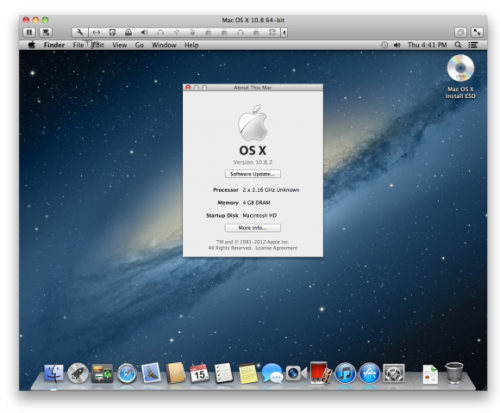
I imagine what kind of thought most readers probably had when they paid attention to the title of this note – “Why would someone need to use two different versions of OS X on one Mac?” Let’s say you need to run several old PowerPC programs that do not have optimization for modern operating systems. At hand there is an old iMac model, on which Mac OS X Snow Leopard is used as the main system for this purpose. How can I install it, for example, Mountain Lion, to get access to all the new programs? There are two possible solutions to this problem.
First, you can buy a separate hard drive, format it to the requirements of Mac and install the required version of Mac OS X. When you need to switch between systems, simply launch “System Settings”, go to the “Startup Disk” tab and select corresponding disk.
If it is a question of installing Mountain Lion, then you should take into account the minimum hardware requirements. Officially, the latest version of the desktop operating system can be installed on the following computers:
- iMac (model 2007 or newer)
- MacBook (model 2008 or newer)
- MacBook Pro (model 2007 or newer)
- MacBook Air (model 2008 or newer)
- Mac mini (model 2009 or newer)
- Mac Pro (model 2008 or newer)
- Xserve (model 2009)
Also, to upgrade to Mountain Lion, you need 2 gigabytes of RAM, 8 gigabytes of hard drive space and installed OS X Snow Leopard 10.6.8 (or OS X Lion).
There is another way – virtual machines. You can purchase Parallels Desktop 8 products for $ 80 or VMware Fusion 5 for $ 50. Both of these solutions are installed on Lion and Mountain Lion and allow you to run other operating systems (including Windows, Linux and older versions of OS X).
[via macworld]
